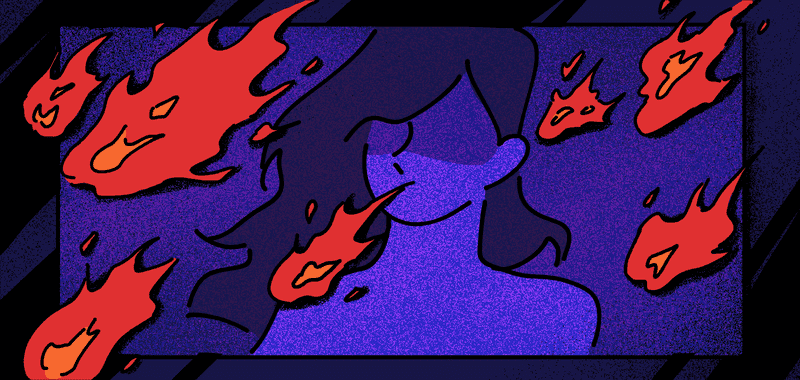
I Guess We’ll Never Know: Ambiguous Endings in Horror
Anna Dunn, Managing Editor
October 13, 2021
The best horror movies have ambiguous endings. Endings that make you leave confused, in disbelief, and searching the internet for more details and answers. The movie remains in your head, and you’re stuck thinking, what happens next?
Ambiguous endings are the opposite of catharsis. Where you expect a release of tension, you instead get confusion and a desire to know more. But this is the ideal outcome of horror, which wants you at the edge of your seat the whole team, and often is focused on thematic notions rather than technical plot.
The best example is El hoyo (aka The Platform) a Spanish film that debuted on Netflix in March 2020. El hoyo takes place in a fictional society in which hundreds of people are kept together, two to a floor, in a massive tower. Each floor is a single room with a hole in the middle, which a flat platform full of food passes through once a day. Each floor gets several minutes to eat what they can before the platform descends to the next floor. The platform was designed to have just enough food for every inmate, but that design implies that those on the top floor, with first access to the food, will only take what they need. Of course, as anyone below floor 50 learns, no one acts with the whole in mind. Hunger takes over, and those at the button turn to each other to feed.
The themes of gluttony and selfishness, catalyzed by privilege, were especially impactful in March 2020, when many Americans refused to socially distance in favor of routine, normalcy, partying and the abstract notion of American freedom.
Without totally revealing the ending (go watch it for yourself, especially if you were a fan of Squid Game), El hoyo ends with a single, blurry shot of a character about to leave the tower, but with no actual exit. There is no Hunger Games-style triumphant overhaul of the unjust institution. There is not even much consideration of the architects of the tower. The ending is abrupt and unclear, leaving the viewer with only a blurry, rapid-paced final shot.
A far more famous horror movie, The Thing, used ambiguity to create impact, as well. In The Thing, it is never confirmed that the alien creature is killed, and the viewer is left just as paranoid and suspicious as the main cast was throughout the majority of the movie.
In The Shining, ambiguity is used to twist the ending. It reveals that the main character, Jack Torrance, can be spotted in a photograph from the 1920s. That revelation is not followed by any additional details, and the viewer has to consider all the hints throughout the movie of what that could possibly mean.
This kind of ending is my favorite in all kinds of movies, but especially in horror. Without a clear resolution, the tension that has been built up throughout the whole movie seems to carry, and it’s not until the credits roll in that the viewer realizes they can breathe again. The catharsis comes from realizing that you are free from the stress of the film.
An ambiguous ending also focuses the final few moments on the film on the emotional or philosophical themes of the film. Injustice, paranoia, madness. In El Hoyo, the ending leaves the story figuratively contained within the levels of the tower. The focus is not on the unfair institution, but the impact that has on the people trapped within it.
The calming release of catharsis is unnecessary in horror; you want to leave the theater feeling rattled and even confused.